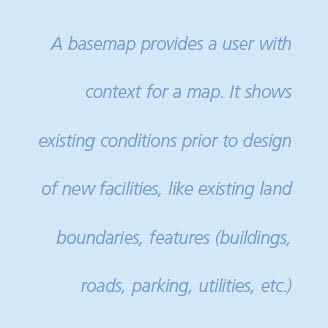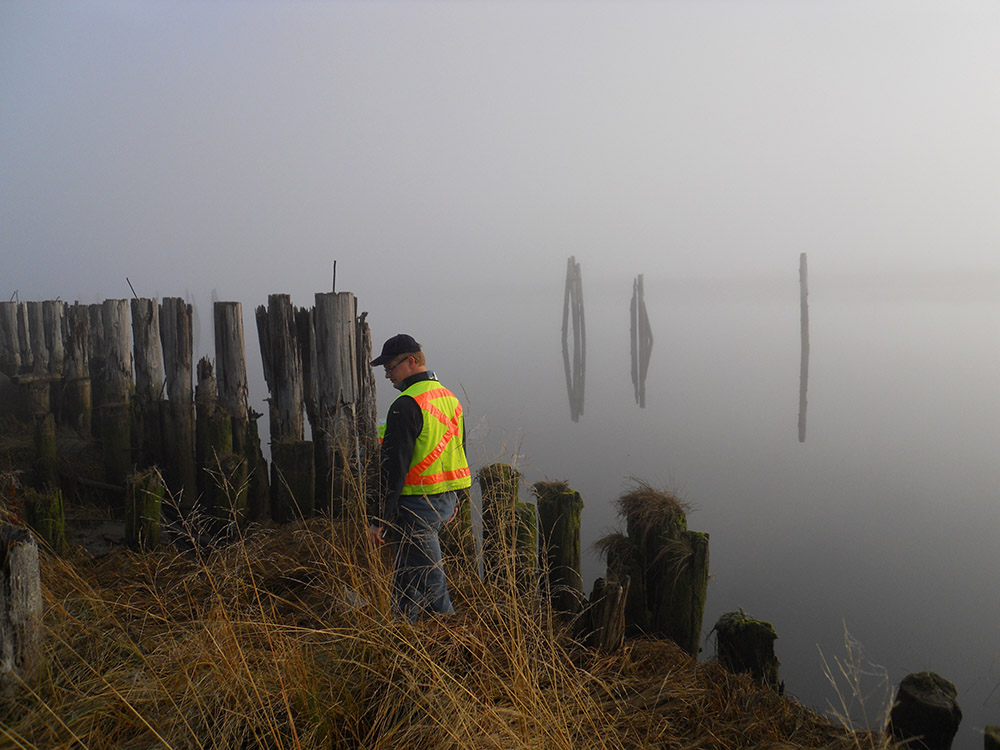Even a Little Experience Can Be a Huge Asset
A little experience working on the survey crew can be a huge asset in the civil engineer’s tool box. As a civil and transportation engineer, I spend most of my days in the office crunching numbers, solving equations, and designing in AutoCAD. While I enjoy the work, I like to spend my free time outdoors. So, when I was given the opportunity to help out on the survey crew, I jumped at the chance.
I found myself exploring the backwoods of the Olympic Peninsula, wading through detention ponds, and hiking in the foothills of the Cascade Mountains. Along the way, I learned a lot about how the data that I work with every day is collected and converted into high quality survey base maps. It was a bit challenging at first; I helped where I could with my limited experience, setting up the tripods and instruments, pounding in control points, turning angles, or running the rod.
 I was expected to quickly learn and memorize our system of codes and data input. Once my head stopped spinning, I began to understand how the meticulous process used for data collection and record keeping provides a high level map that can be verified and used in many different ways. As I use these survey base maps each day in my design work, it has been useful to have a better understanding of how the map was built and what the surveyor was communicating with each point.
I was expected to quickly learn and memorize our system of codes and data input. Once my head stopped spinning, I began to understand how the meticulous process used for data collection and record keeping provides a high level map that can be verified and used in many different ways. As I use these survey base maps each day in my design work, it has been useful to have a better understanding of how the map was built and what the surveyor was communicating with each point.
The Connection Between Surveying & Design
Imagine what would happen if a manhole was incorrectly located on a survey base map and you as an engineer designed your sewer main to tie into said manhole. Not only would the contractor be digging his trench in the wrong spot, but the design of the sewer line could be flowing in the wrong direction. You don’t really want sewer to go the wrong direction.
The variety of jobs I worked on during my time as a deputized surveyor took me far and wide. I was fortunate that some were for transportation projects on which I would later apply my engineering skills. Seeing the full project life cycle gave me a new appreciation for high quality survey information upon which the successful design is built. A basemap, plan sheet, and construction photo of one such project, the Chain Lake Road Roundabout in Monroe, WA, is shown below.
Part of a Long Tradition
Many of the senior engineers at Reid Middleton began their careers working on the survey crew. I have heard that at one point a former survey director, joking, claimed that he had trained the majority of our civil engineers. I don’t think any of the engineers who spent time on the crew would argue that the time was not well spent.
They do tell great stories that begin with, “When I was on the survey crew.” Some of the stories include being chased through the woods by hornets, flooded hip waders, disgruntled property owners, and what not to do with a machete. A retired engineer who started his career on the survey crew would say, “We used to have to pull chain and adjust for humidity,” or, “ I once fought off three bears with nothing but a plumb bob.” (I’m not sure I believe that last one.)
Despite the perils that come with the job, Reid Middleton survey staff has always had a reputation for accuracy and discipline in their work, a standard set by our namesake, LeRoy Middleton. They do an excellent job of creating some of the highest quality base maps that I have had the opportunity to work with. It was truly a privilege to be part of the process for a season and learn from the pros.

